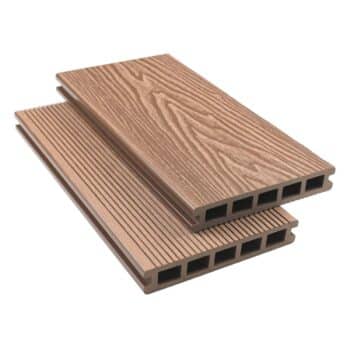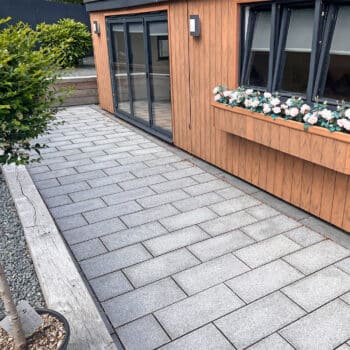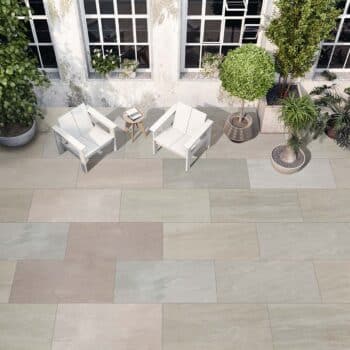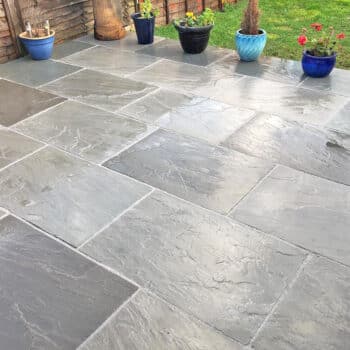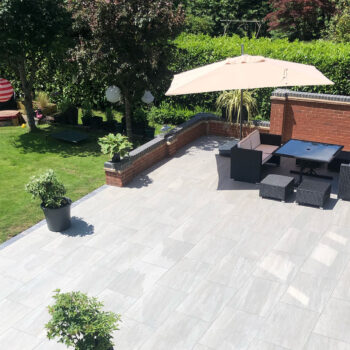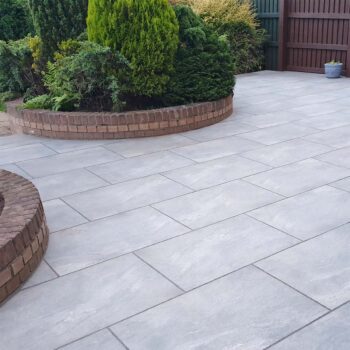Stone cladding is an excellent way to add rustic charm to your living area without the cost and issues that come with using large natural stone tiles, especially where your fireplace is concerned.
Natural stone cladding, or split face tiles as it’s sometimes referred to, comes in panels made up of small sections of tile that have been glued together and mounted on a backboard for easy installation.
Choosing Your Natural Stone Cladding
When using stone cladding on a fireplace, you’re creating a feature point in your room. Therefore, it’s crucial that the cladding you choose is in-line with your theme and colour palette.
One of the most popular styles of interior stone cladding is slate, which comes in a variety of hues. From black-blue and grey-black to sandy rustic copper featuring a medley of copper, buff and grey tones, there’s a type for every home.
You may also want to consider quartzite split face tiles, which tend to be lighter in tone and have a glittery finish. Quartzite looks fantastic in rooms with spotlights on the ceiling.
Installing Stone Cladding on Fireplaces
When installing natural stone cladding on a fireplace, there are a few things to keep in mind.
Check Your Foundation is Heat-Resistant
One of the most important factors to consider is ensuring that your fireplace’s chimney breast is heat-resistant. What does that mean? It means the wall is covered with heat-resistant plasterboard or similar, so it doesn’t get too hot, even when your fire is blazing. If your chimney breast is warm to touch, that’s fine. However, it shouldn’t be too hot, and if it is, you may need to reconsider cladding.
Use a Heat-Resistant Adhesive
Even if your chimney breast is heat-resistant, we highly recommend using a heat-resistant adhesive when installing your interior stone cladding. By using a heat-resistant adhesive, you ensure your cladding’s longevity and decrease the likelihood of cracks.
In the worst-case scenario, your cladding may even come away from the wall if the adhesive gets too hot and melts.
Corners and Angles
Most retailers, including Nustone, do not sell corner pieces of natural stone cladding as there’s no way to guarantee it’ll match. But don’t worry. Corner pieces are not essential as you can overlap the cladding when laying to achieve a similar effect. Of course, it doesn’t always look perfect; however, this method is widely used in homes throughout the UK, and everyone has the same problem.
To Seal or Not to Seal?
At Nustone, we usually recommend that natural stone tiles are sealed if they’re in areas subject to moisture, spills and grime.
You don’t have to seal your natural stone tiles; however, it may help to keep them looking their best.
Similarly, some like to seal stone cladding to enhance its colour, which you can also do by applying a natural stone colour enhancer.
Allow for breakages, cuts and wastage
As when using any natural stone product, we recommend allowing 10% for breakages, cuts and wastage when ordering interior stone cladding. For instance, if you need 18m² of cladding, you should order at least 20m², just in case.
Have a question about our natural stone cladding? Contact us.
